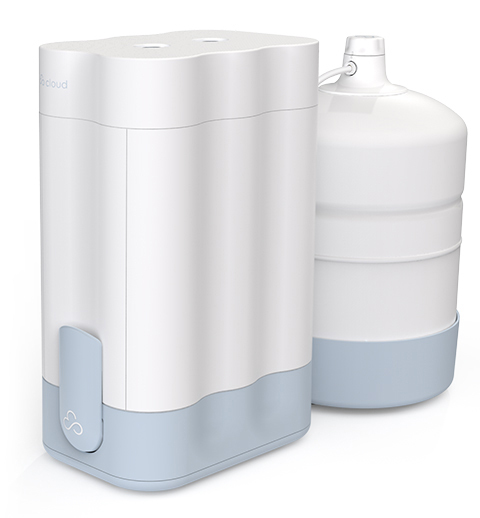RO Removes Pathogens…Period
So, does reverse osmosis remove bacteria?
Bacteria rarely travels alone, so if your water contains bacteria it probably contains other pathogens too.
Luckily, RO systems remove bacteria, viruses, protozoa, and all other microscopic creepy-crawlies.
Reverse osmosis works by forcing highly pressurized water through a semipermeable membrane.
Bacteria gets blocked by the membrane, and clean water passes to the other side.
In addition to reverse osmosis, RO systems incorporate several pre- and post-filters to remove sediment, chlorine and other contaminants.
Other Ways to Remove Bacteria from Tap Water
Here’s a quick comparison of alternatives to RO for bacteria removal:
- Ultraviolet Systems: Kills pathogens with UV light. VERY HIGH EFFECTIVENESS.
- Distillation Systems: Boils water and recollects the steam. VERY HIGH EFFECTIVENESS.
- Microfiltration Filter: Filters with micro-sized pores (approx. 0.1 micron). MODERATE EFFECTIVENESS.
- Ultrafiltration Filter: Filters with ultra-fine pores (approx. 0.01 micron). VERY HIGH EFFECTIVENESS.
- Nanofiltration Filter: Filters with nano-sized pores (approx. 0.001 micron). VERY HIGH EFFECTIVENESS.
Most of them seem to remove bacteria pretty well, so how do you know which is the best one for you?
RO systems remove 99.9% of pathogens and contaminants, day in and day out. Plus, they’re easy to maintain and last up to 10-15 years.
Microfiltration and ultrafiltration, on the other hand, struggle to remove viruses and chemicals.
Distillation is in a similar boat---it removes most, but not all, common contaminants.
Point of Use vs. Whole House RO Filter
Reverse osmosis systems are either point-of-use (POU) or point-of-entry (POE).
POU systems only treat the water that’s coming out of a single tap, usually the kitchen sink.
POE systems, on the other hand, treat the entire house.
For most people, POE systems are all you need.
Health Effects of Bacteria In Water
Weak or strong, every immune system is vulnerable to contaminated drinking water.
Bacteria and other pathogens can cause:
- Diarrhea
- Vomiting
- Cramps
- Nausea
- Headaches
- Fever
- Fatigue
However, only people with weakened immunity have to worry about life-threatening complications.
Do You Have a Weak Immune System?
Some people’s immune systems are so weak that even showering in bacteria-contaminated water can make them sick.
High-risk people include:
- Organ transplant patients
- Immune system disorders
- HIV/AIDS patients
- Cancer patients
- Elderly
If you have a weak immune system, your doctor might recommend a whole house filter.
Does Boiling Water Kill Bacteria?
If you’re worried about bacteria but can’t afford a filter, you can always boil your water.
Studies show that boiling water above 212 F destroys dangerous microorganisms like Cryptosporidium and Shigella.
During water emergencies, your local government might issue a boil-water advisory and order you to boil your water before:
- Preparing baby formula
- Brushing your teeth
- Making beverages
- Washing produce
- Cooking
But boiling your water won’t protect you from everything…
In order to remove chemicals, you’re still going to need an RO system.
Private Well Are More At Risk
Most homes in the countryside are on private wells.
Unlike public water systems, the Environmental Protection Agency (EPA) doesn’t regulate private wells.
As a result, rural homeowners have more bacteria to deal with, often due to manure from nearby farms.
In other words, poop could be sneaking into your water.
As a well owner, here’s what you should do to prevent contamination:
- Regularly inspect your well for damage
- Conduct routine maintenance
- Test your water for bacteria at least once a year through an accredited facility.
- Disinfect your well with chlorine
- Install a reverse osmosis system to remove chlorine, bacteria and other contaminants
If You’re On a Public Water System
Bacteria is less of a concern on public water systems, but you still have other things to worry about…
Treatment plants add chemical disinfectants and fluoride, both of which have damaging long-term effects like cancer and brain damage, especially in young children.
The best way to protect your family from all of the above is to install a reverse osmosis system.
Cloud Water Filters are the next generation of low-maintenance, tech-enhanced RO systems.
They use built-in software to monitor your water quality 24/7 through an app on your phone, track water usage, and automatically ship replacement filters right to your door.
Click here to learn more.

